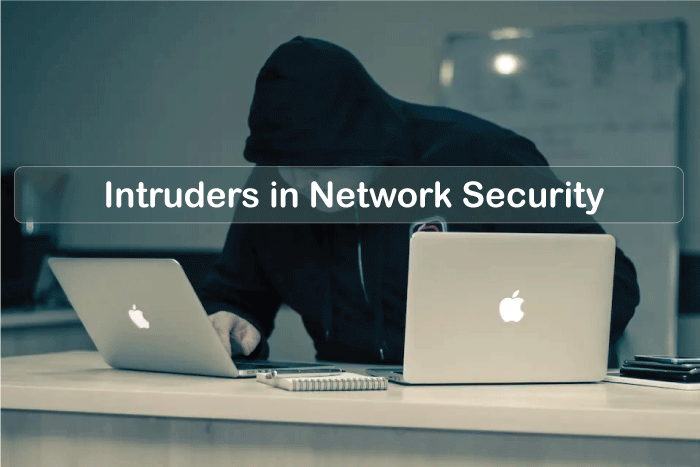Intruders in Network Security
What is meant by Intruder in Network Security?An intruder is an unauthorized person or entity that tries to access a system or network without authorization with the intent of doing harm, stealing data, or interfering with regular operations. The intrusive party might be a hacker, a hostile insider, or someone seeking to take advantage of a system weakness. The hacker may enter the network or system via a variety of methods, including software flaws, social engineering, and password cracking. After the hacker has access to the network or system, they could try to steal important data, put malware on the system, or seize control of it. This may result in a number of security risks, including identity theft, denial-of-service assaults, and data breaches. To stop unauthorized access and defend against attackers, network security mechanisms like firewalls, intrusion detection systems, and access restrictions are put in place. In order to recognise and reduce possible security concerns, it's also crucial to conduct regular security audits and vulnerability assessments. Intruders in Network Security: Understanding the ThreatNetwork security is more crucial than ever in the current digital era. Networks have become indispensable for conducting business, communicating, and storing sensitive information as a result of the growing usage of technology and the internet. Yet, there is a higher danger of security breaches as a result of this greater reliance on networks. Intruders pose one of the largest dangers to network security. An intruder, usually referred to as a hacker, is an unauthorized person who makes an effort to log into a system or network with the goal of doing harm or stealing data. Both insiders and outsiders, such as malevolent workers or hackers trying to access a company's network, can commit intrusions. Regardless of where they come from, intruders constitute a major danger to network security and might result in catastrophic harm. The Methods of IntrudersMany techniques are employed by intruders to enter networks and systems. Cracking passwords is one such technique. Automated tools are used by hackers to try different passwords until they locate the right one. They could also employ social engineering, a technique that includes duping people into disclosing their passwords or other private data. Exploiting holes in hardware or software is another strategy. A system's code may include a flaw that intrusions can use to access it. Operating systems, software, or hardware components may all include these vulnerabilities. Malware, like viruses, Trojans, or ransomware, may also be used by intruders to enter a system or network. Malware can be downloaded or installed through compromised websites, email attachments, or software. The Consequences of IntrudersA network or system can suffer serious harm at the hands of intruders. Sensitive data, including credit card details, personal information, and intellectual property, might be taken if an attacker gets entry. Moreover, they could put in malware that disrupts operations or causes data loss or system breakdowns. Denial-of-service attacks, which have the power to take down whole websites or networks, are one type of assault that intruders can conduct from a system or network. There are indirect effects of an incursion in addition to the obvious effects. For instance, if a company's security was compromised, their image may suffer. Consumers could stop trusting the company and do business elsewhere. Moreover, there can be monetary and legal repercussions, including penalties for breaking data protection regulations or litigation from clients who were harmed by the breach. Keeping Intruders AwayFor network security to be maintained, intrusion prevention is crucial. Organizations can take a number of measures to lessen the danger of an incursion. Use of secure passwords and authentication procedures is one of the most crucial. Biometric authentication, such as fingerprint or face recognition, as well as two-factor authentication are examples of this. To fix vulnerabilities, organizations should also upgrade their gear and software often. The identification and reduction of possible security threats can also be aided by regular security audits and vulnerability assessments. Firewalls and intrusion detection systems are both capable of stopping illegal access. Organizations should develop policies and processes to teach staff about the value of network security in addition to technological solutions. Regular security training, password management guidelines, and managing sensitive data procedures are a few examples of this. Network security is seriously threatened by intrusion. They can enter networks and systems via a number of techniques, and once inside, they have the power to inflict serious harm. Technical measures, including firewalls and intrusion detection systems, as well as policies and procedures to train staff and lower the danger of social engineering assaults must be used in tandem to prevent intrusions. Organizations may safeguard sensitive data, uphold consumer trust, and avert the legal and financial repercussions of a security breach by adopting proactive measures to thwart hackers. |
 For Videos Join Our Youtube Channel: Join Now
For Videos Join Our Youtube Channel: Join Now
Feedback
- Send your Feedback to [email protected]
Help Others, Please Share









